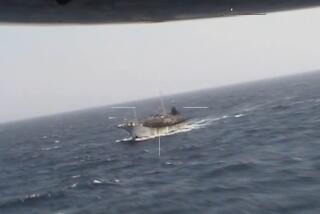Scientists develop sensor to sniff out fish fraud

Does your fish seem a little, well, fishy?
Much fish imported into the United States is not what it’s alleged to be. According to a 2011 study, as much as 30% of seafood imported into the U.S. is fraudulently labeled, costing consumers, fishermen and the seafood industry about $20 billion annually.
To combat this problem, scientists at the University of South Florida College of Marine Science have come up with a handy little portable gadget that can identify exactly what kind of fish you’re eating — even if it’s cooked and smothered in sauce.
The developers of the device, called the QuadPyre RT-NASBA, focused on grouper, because demand for this fish outweighs supply in the United States, so much of it is imported, making it rife for fraud. (Making things even more complicated, the U.S. Food and Drug Administration allows 64 different species to be labeled grouper.)
Reports have shown that grouper is mislabeled 19% to 38% of the time, often substituted with inferior fish such as Asian catfish or tilapia. Other fish species commonly labeled wrongly include wild salmon, Atlantic cod and red snapper.
“The demand for grouper in the U.S. is so strong that it cannot be met by the harvesting of domestic species alone,” says Robert Ulrich, lead researcher on the project.
“In 2012, over 4,000 metric tons of foreign grouper, worth $33.5 million, were imported into the U.S. This mass quantity of imported grouper creates opportunities for fraud, which can lead consumers to pay more for lesser valued seafood species and may allow importers to avoid paying tariffs.”
A paper published in the journal Food Control details how the QuadPyre RT-NASBA can sniff out the grouper impersonators at your local warehouse, fish market or restaurant. The handheld device works by using a form of RNA analysis. John Paul, a biological oceanographer who helped develop it, says the gadget could be used at the point of purchase and requires less than 45 minutes to complete its analysis. According to the paper, the device was able to identify mislabeled grouper 80% of the time.
It’s a big technological breakthrough — in the past, it would take hours or days to properly identify fish samples. And yes, it will even work on fish that has been breaded and fried.
The device will soon be released to the public under the name GrouperChek by PureMolecular, LLC, costing about $2,000. Subsequent technology products for checking other commercial seafood are coming down the, er, pike.
More to Read
Eat your way across L.A.
Get our weekly Tasting Notes newsletter for reviews, news and more.
You may occasionally receive promotional content from the Los Angeles Times.










